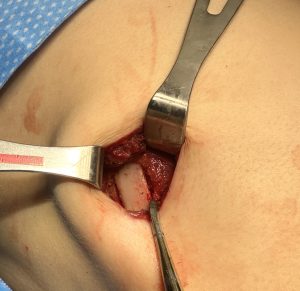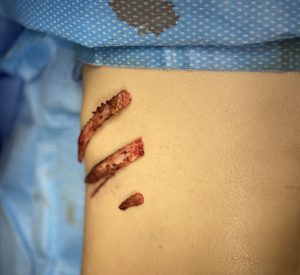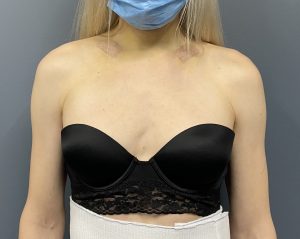Background: Structural waist reduction is synonymous with rib removal surgery. It is the next and last step beyond traditional soft tissue body contouring procedures. Rib removal exerts its effects by the combination of bone mass removal and the loss of thoracoabdominal muscle attachments. This allows the waistline to fall inward. How much it does so highly depends on the overlying soft tissue thicknesses.
For this reason thin patients usually get the best results from rib removal surgery. Their thinner soft tissue cover allows the loss of structural support to be more fully seen. Such patients are also more likely to successfully access and remove rib #10. The less thick the soft tissue layer is the shorter the distance between the skin incision and the ribs is. This also makes it easier to get to the back side of rib #10 so if the parietal pleura is present it can be more safely elevated during the rib dissection.
Case Study: This thin female desired waist reduction through structural modifications. She was very lean and would not benefit from flank or abdominal liposuction. Her lower rib outlines were seen and rib #12 able to be palpated. (which is not common) She had significant scar concerns so a type 1 approach was planned.






Case Highlights:
1) Type 1 rib removal always involves the removal of ribs #11 and #12 and #10 if it is possible. (safe)
2) Rib #10 is more important to waist reduction than rib #12 due to its larger bone mass.
3) Thin patients offer the best chance to safely remove rib #10 and keep the incision as small as possible.
Dr. Barry Eppley
World-Renowned Plastic Surgeon






